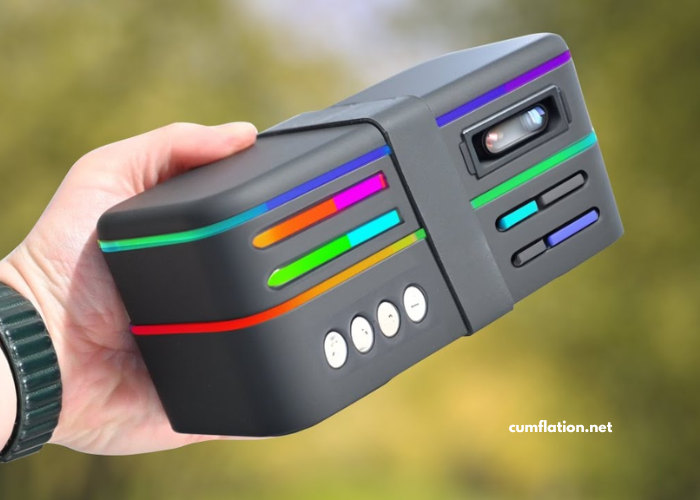
The technology landscape is constantly evolving, with each year bringing exciting new gadgets and groundbreaking innovations that shape how we live, work, and play. As we step into 2025, it is evident that technological advancements are accelerating at an unprecedented pace. From Artificial Intelligence (AI) to Quantum Computing and beyond, new gadgets and innovations are transforming every aspect of our lives.
This article delves into the most notable gadgets and technological innovations that will dominate 2025, providing a comprehensive guide to the next wave of tech. Let’s explore the trends that will define the year ahead.
The Rise of Artificial Intelligence (AI) and Machine Learning
AI-Powered Personal Assistants
In 2025, AI will be deeply integrated into daily life, making tasks more efficient and intuitive. Personal assistants powered by advanced AI will become much more sophisticated, offering voice recognition, predictive capabilities, and seamless interactions. These assistants will not only handle simple tasks like setting reminders or playing music but will also manage complex actions such as optimizing your home environment, analyzing personal health data, and even making real-time decisions based on your preferences and behavior patterns.
AI in Healthcare
One of the most exciting applications of AI is in healthcare. In 2025, we can expect AI-driven diagnostic tools that can predict health issues before they manifest, reducing the need for invasive procedures and enabling more personalized treatments. AI-powered robotic surgery assistants will also become more precise, allowing for faster recovery times and minimal risk. With continuous learning and vast datasets, AI will transform the healthcare industry, enabling better patient outcomes and revolutionizing medical practices.
Autonomous Vehicles
The technology behind autonomous vehicles (self-driving cars) has made significant strides, and 2025 is set to be the year when these vehicles become mainstream. Companies like Tesla, Waymo, and others are expected to offer fully autonomous cars that can drive themselves without any human intervention. With AI and sensor technology improving rapidly, these cars will not only offer convenience but also improve road safety and reduce traffic accidents. The widespread adoption of autonomous vehicles will likely reshape transportation infrastructure and urban planning as well.
Breakthroughs in Quantum Computing
What is Quantum Computing?
Quantum computing is a field that promises to revolutionize the way we process information. Unlike traditional computers that use binary (0 or 1) to represent data, quantum computers use quantum bits or qubits. These qubits can exist in multiple states simultaneously, allowing quantum computers to process vast amounts of data at speeds that would be unimaginable with classical systems. In 2025, we are likely to see quantum computers being used for practical applications in fields like cryptography, pharmaceuticals, climate modeling, and artificial intelligence.
Quantum Computers in Data Security
One of the most significant advantages of quantum computing is its potential to break current encryption methods. However, this challenge has spurred the development of quantum-resistant encryption algorithms. In 2025, these algorithms will likely become the standard, ensuring data security even in a world where quantum computers are capable of breaking traditional encryption methods.
Quantum Computing for Research and Innovation
Quantum computers will also play a pivotal role in accelerating research across various fields. For example, in drug discovery, quantum computers will enable researchers to simulate complex molecules, helping them find new treatments for diseases like cancer. Similarly, quantum simulations will help scientists better understand climate change, enabling more accurate modeling and predictive analysis of environmental phenomena.
Immersive Technologies: Virtual and Augmented Reality
Virtual Reality (VR) for Entertainment and Education
Virtual Reality (VR) continues to evolve, and in 2025, it will have a transformative impact on entertainment and education. VR will provide users with more immersive and realistic experiences, whether it’s in gaming, virtual travel, or interactive education. By 2025, VR headsets will become lighter, more comfortable, and more affordable, making them accessible to a broader audience.
Educational institutions will adopt VR for immersive learning experiences, allowing students to explore historical events, interact with complex scientific concepts, or take virtual field trips to remote parts of the world. VR will offer students a deeper understanding of subjects through experiential learning, revolutionizing the education sector.
Augmented Reality (AR) for Everyday Use
While Virtual Reality creates entirely new worlds, Augmented Reality (AR) enhances the real world with virtual elements. In 2025, AR will become a key tool in industries like retail, healthcare, and manufacturing. For instance, AR glasses could overlay helpful information onto a person’s field of view, providing real-time data, product recommendations, or instructions.
In retail, AR will allow consumers to try products virtually, whether it’s seeing how furniture looks in their home or trying on clothes without stepping into a store. In healthcare, AR will help surgeons visualize organs and tissues during procedures, increasing precision and reducing risk.
Wearable Tech and Smart Devices
The Next Generation of Smartwatches
Smartwatches have already become a staple in many people’s lives, but in 2025, we can expect them to be more advanced than ever. With the integration of more sensors, these devices will not only track fitness and health metrics but also monitor a wider range of vital signs, such as blood sugar levels, hydration status, and even mental health indicators like stress levels.
New features will allow users to interact with their devices through gestures or voice commands, and battery life will continue to improve, making these gadgets more efficient. We will also see smartwatches that can perform independent functions, such as making phone calls, sending messages, or controlling smart home devices, all without needing to be connected to a smartphone.
Smart Clothing and Textiles
Wearable technology is no longer limited to just watches and fitness trackers. In 2025, smart textiles will become increasingly common, offering clothing with built-in sensors and technology. For example, smart jackets could monitor your body temperature and adjust accordingly, while fitness apparel might track muscle activity and posture.
Smart clothing can also have health benefits, such as clothes that help improve blood circulation or garments designed to monitor heart rate and breathing patterns. These innovations will not only make life more convenient but also contribute to better health and well-being.
The Future of Robotics
Advanced Robots in Manufacturing and Logistics
Robots have already made a significant impact in manufacturing and logistics, but in 2025, they will become even more advanced and autonomous. These robots will not only be able to perform repetitive tasks but also learn from their environment, adapt to changing circumstances, and collaborate with humans in more complex ways. In industries such as warehousing, robots will handle everything from picking up inventory to packaging products, reducing human labor and increasing efficiency.
Personal Robots
In 2025, robots will also start to enter the consumer market in a bigger way. These personal robots will assist with household chores, providing help with cleaning, cooking, or even caring for elderly family members. They will be equipped with AI-powered speech recognition and emotion-sensing capabilities, making interactions with them more natural and intuitive.
Personal robots could become a common fixture in many households, acting as companions, assistants, or helpers. With advanced mobility, sensors, and interaction protocols, these robots will play an increasingly important role in our daily lives.
Sustainable Technology and Green Innovations
Solar-Powered Gadgets
As sustainability continues to be a major concern, 2025 will see an increase in solar-powered gadgets. From smartphones and laptops to home appliances, more and more devices will feature solar technology, helping to reduce dependence on traditional energy sources. Solar-powered charging stations will also become more widespread, making it easier for people to charge their devices using renewable energy.
Eco-Friendly Transportation
Electric vehicles (EVs) have already started to take over the automotive industry, and by 2025, they will become even more mainstream. With the development of solid-state batteries, EVs will have longer ranges and shorter charging times. Additionally, the integration of renewable energy sources into transportation networks will further reduce carbon footprints. Car manufacturers will also prioritize sustainability in their vehicle designs, incorporating recyclable materials and energy-efficient technologies.
Conclusion
As we move further into 2025, the latest gadgets and technological innovations promise to reshape industries, improve our quality of life, and address some of the world’s most pressing challenges. From AI-powered devices to groundbreaking advances in quantum computing, immersive technologies, and sustainable solutions, these innovations will redefine the way we interact with the world around us.
Staying ahead of these trends will be essential for both businesses and consumers alike. As technology continues to advance, those who embrace these new tools and gadgets will likely be at the forefront of the digital revolution. The future of technology is bright, and 2025 is shaping up to be a pivotal year in that transformation. Whether you’re a tech enthusiast, a professional in the field, or just someone interested in how the world is changing, keeping an eye on these innovations will be crucial as we move further into the future.




